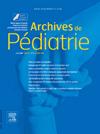Biology of bone mineralization and ectopic calcifications: the same actors for different plays
IF 1.3
4区 医学
Q3 PEDIATRICS
引用次数: 0
Abstract
Bone has several crucial functions. It is essential for locomotion and allows our body to stand erect against gravity. A mismatch between the mechanical stresses applied to it and its mechanical resistance leads to fractures. Bone also has numerous endocrine functions. It acts as a reservoir for minerals such as calcium and phosphorus, making it the target of calciotropic hormones that mobilize these minerals, particularly calcium, according to the body's needs. Additionally, bone secretes hormones, notably fibroblast growth factor 23 (FGF23), which regulates urinary excretion of phosphate and the bioavailability of active vitamin D. Bone mineralization is the process that facilitates the organized deposition of minerals in the bone matrix, providing rigidity and appropriate mechanical resistance. This process is compromised in genetically related bone mineralization disorders, such as those causing hypophosphatemia or hypophosphatasia. Conversely, calcification can be pathological, affecting soft tissues like the blood vessels, as seen in generalized arterial calcification of infancy (GACI) or arterial calcification due to CD73 deficiency (ACDC). The aim of this article is to first present the composition and structure of the mineralized bone matrix, to review the current understanding of the molecular mechanisms of mineralization, and finally to discuss the conditions associated with ectopic calcification and the underlying mechanisms.
骨矿化和异位钙化生物学:同剧不同角
骨骼具有多种重要功能。它对运动至关重要,并能让我们的身体直立起来对抗重力。如果施加在骨骼上的机械应力与骨骼的机械阻力不匹配,就会导致骨折。骨骼还具有多种内分泌功能。它是钙和磷等矿物质的储存库,因此成为促钙激素的目标,促钙激素可根据人体需要调动这些矿物质,尤其是钙。此外,骨骼还能分泌激素,特别是成纤维细胞生长因子 23(FGF23),它能调节磷酸盐的尿排泄和活性维生素 D 的生物利用率。骨矿化是促进矿物质有组织地沉积在骨基质中的过程,它能提供刚性和适当的机械阻力。与遗传有关的骨矿化障碍(如导致低磷血症或低磷酸盐症)会影响这一过程。相反,钙化也可能是病理性的,影响到血管等软组织,如婴儿期全身动脉钙化(GACI)或 CD73 缺乏症引起的动脉钙化(ACDC)。本文旨在首先介绍矿化骨基质的组成和结构,回顾目前对矿化分子机制的理解,最后讨论与异位钙化相关的情况及其内在机制。
本文章由计算机程序翻译,如有差异,请以英文原文为准。
求助全文
约1分钟内获得全文
求助全文
来源期刊

Archives De Pediatrie
医学-小儿科
CiteScore
2.80
自引率
5.60%
发文量
106
审稿时长
24.1 weeks
期刊介绍:
Archives de Pédiatrie publishes in English original Research papers, Review articles, Short communications, Practice guidelines, Editorials and Letters in all fields relevant to pediatrics.
Eight issues of Archives de Pédiatrie are released annually, as well as supplementary and special editions to complete these regular issues.
All manuscripts submitted to the journal are subjected to peer review by international experts, and must:
Be written in excellent English, clear and easy to understand, precise and concise;
Bring new, interesting, valid information - and improve clinical care or guide future research;
Be solely the work of the author(s) stated;
Not have been previously published elsewhere and not be under consideration by another journal;
Be in accordance with the journal''s Guide for Authors'' instructions: manuscripts that fail to comply with these rules may be returned to the authors without being reviewed.
Under no circumstances does the journal guarantee publication before the editorial board makes its final decision.
Archives de Pédiatrie is the official publication of the French Society of Pediatrics.
 求助内容:
求助内容: 应助结果提醒方式:
应助结果提醒方式:


